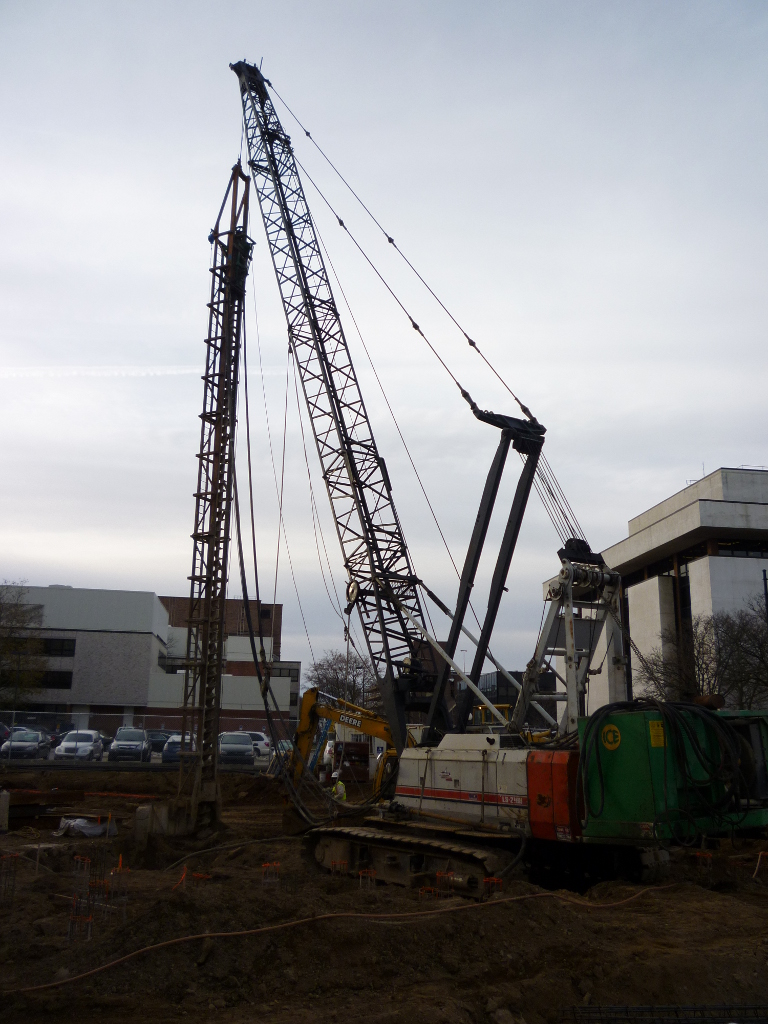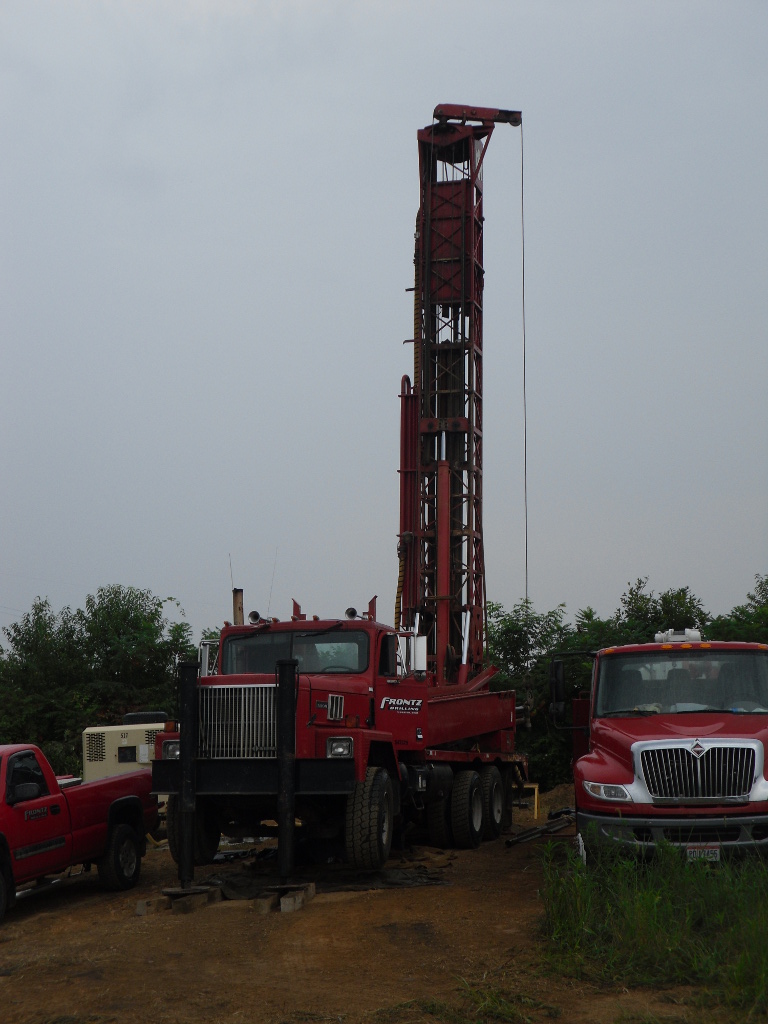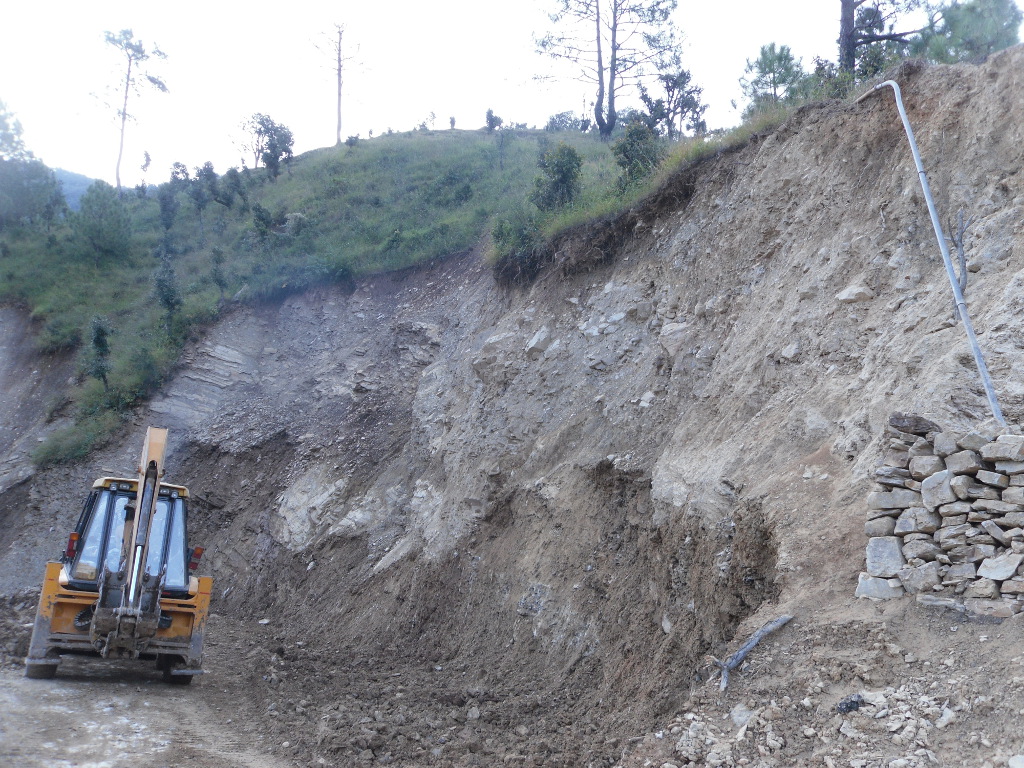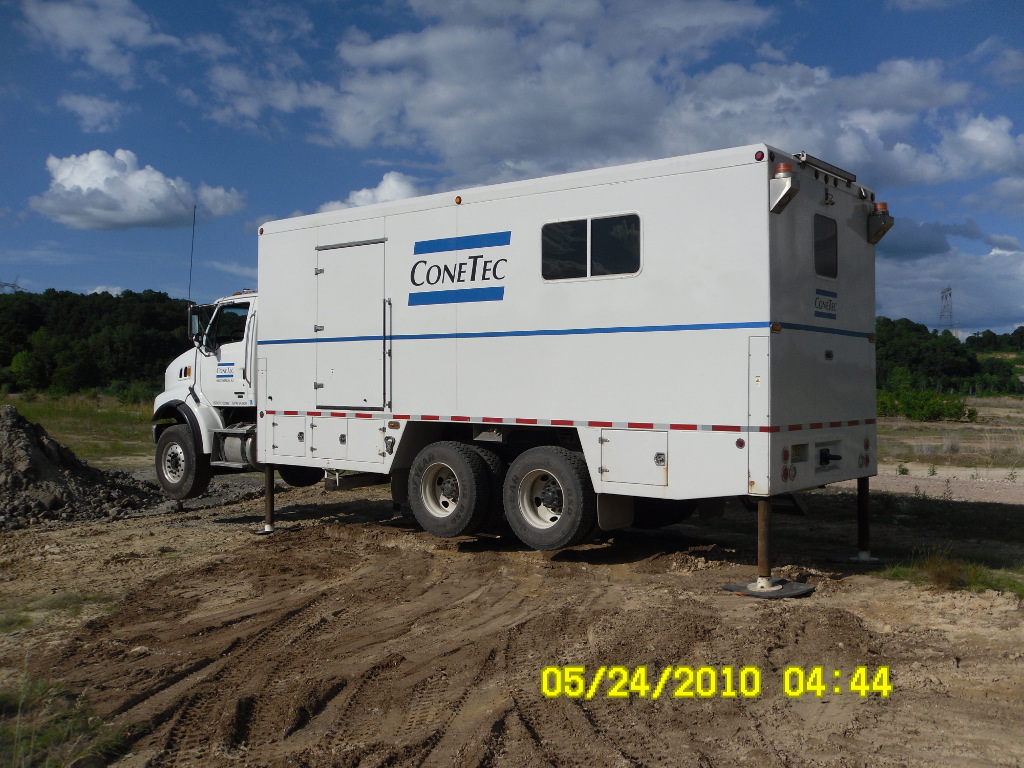
Photo Credit: Alex Mead
Pictured above is a drill rig used for constructing auger cast piles. On this machine a few features are very obvious that make it different than a traditional boom-lattice crane. First, the large green box on the back is an engine that powers the auger. The auger, encased in the frame hanging on the front of the crane, is then used to excavate the soil where the piles will be poured. Once the auger reaches the desired depth, concrete is pumped through the auger like a straw to fill the hole as it is pulled out. A resteel cage can then be lowered into the hole to add tensile strength to the auger cast pile.



